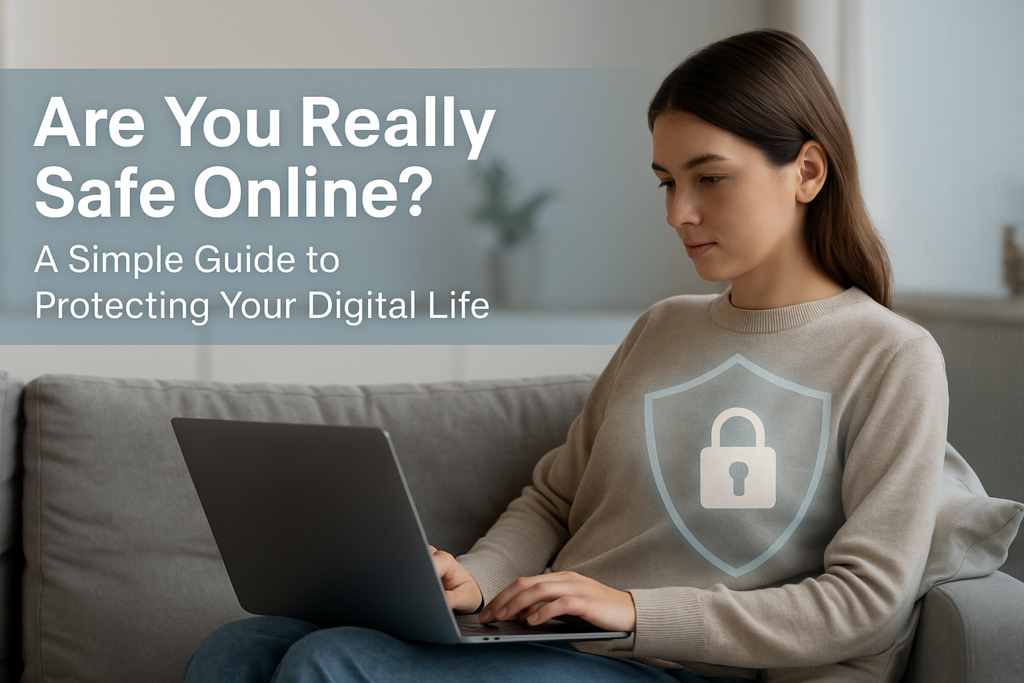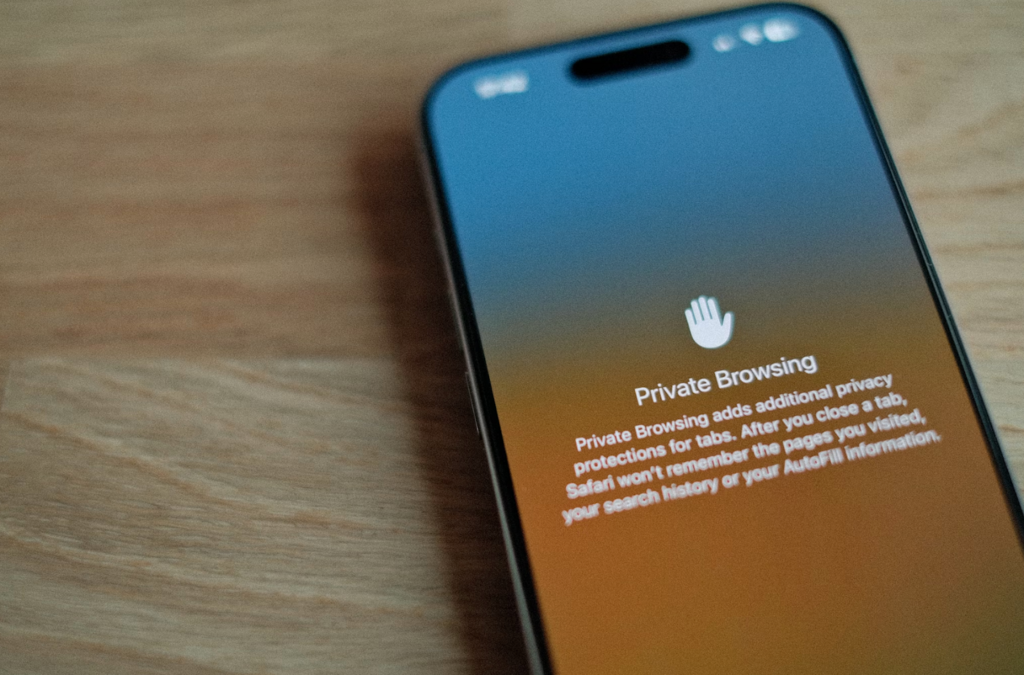You Lock Your Front Door. But What About Your Digital One?
You wouldn’t leave your home unlocked while you’re away. Yet every day, millions of people do the digital equivalent — unknowingly giving apps, websites, and strangers more access than they should.
Emma thought she was safe online. She didn’t visit shady websites, reused only a few passwords, and assumed her phone was secure.
Then one day, she noticed an unfamiliar charge on her credit card, followed by a wave of password reset emails. She’d been targeted — not because she did something “wrong,” but because she didn’t do quite enough.
If you’ve ever wondered whether your own online habits are really secure, you’re not alone. This guide is for people like Emma — and maybe you too — who want a clearer picture of their online safety without diving into tech jargon. You don’t need to be an expert to protect yourself. But you do need to know where you stand.
Are You Actually Safe Online? Let’s Find Out
Most cybersecurity guides toss around tips like candy. But let’s take a different approach. Instead of listing advice, we’ll start with what really matters: your habits.
Ask yourself a few honest questions:
- Do you use different passwords for different websites?
- Have you set up two-factor authentication for your main accounts?
- When was the last time you updated your phone — not just postponed it?
- Do you know which apps on your phone have access to your camera, mic, or contacts?
- Have you ever checked who can see your social media posts?
If you hesitated or said “no” to more than a couple, you’re not alone. Most people don’t realize how much of their private lives is exposed by default. That’s the problem — and the opportunity.
Because here’s the good news: protecting your online privacy doesn’t have to be complicated or time-consuming. The hardest part is knowing where to begin.
What Your Habits Say About Your Risk Level?
Let’s simplify it. If you’re using the same password across multiple sites, avoiding software updates, and clicking “Allow” without checking what an app wants, you’re probably in the danger zone — even if nothing bad has happened yet.
If you’ve already enabled two-factor authentication on your email, use a password manager, and block third-party tracking cookies, you’re ahead of most internet users. That said, even privacy-conscious people often forget to audit app permissions or secure their home network.
The goal isn’t perfection. It’s awareness. The more you understand your digital behavior, the easier it is to fix the weak spots.
The 5 Mistakes That Leave You Wide Open
Let’s look at the common traps most people fall into — the real reasons accounts get hacked, data gets leaked, and people say, “But I thought I was careful.”
1. Password Recycling
You wouldn’t use the same key for your house, your car, and your office. So why use the same password for your bank, your email, and your Netflix? If one account gets compromised, every other one becomes vulnerable. Hackers know this — and they exploit it.
2. Trusting Public Wi-Fi
Coffee shops and airports are great for working remotely. They’re also a playground for cybercriminals. Many attackers set up fake Wi-Fi networks to intercept your browsing activity. Without a VPN, your data travels in plain sight.
3. Ignoring Updates
Every “Remind me later” you click is a chance for malware to sneak in. Updates exist for a reason — they patch known vulnerabilities. Skipping them is like leaving your windows unlocked after learning your neighborhood had a break-in.
4. Oversharing on Social Media
It might feel harmless to share your birthday, your kids’ school photos, or your vacation plans. But that information can be pieced together for identity theft or targeted scams. You’re not just sharing with friends — you’re sharing with algorithms, advertisers, and sometimes, scammers.
5. Giving Apps Too Much Power
Many apps ask for more access than they need. That flashlight app doesn’t need your location. That fitness tracker doesn’t need your contacts. The more you grant, the more data you surrender — sometimes permanently.
Small Fixes That Make a Big Difference
You don’t need to overhaul your digital life overnight. Start with a few habits that deliver real protection.
First, get a password manager. It does the heavy lifting — generating strong, unique passwords and storing them securely. Bitwarden and 1Password are two great options, depending on your needs.
Next, enable two-factor authentication. Start with your email, then move to your banking and shopping accounts. Apps like Authy or Google Authenticator offer more protection than SMS codes.
Then, take a few minutes to review your app permissions. On most phones, you can see exactly which apps are using your camera, mic, location, and more. Revoke anything that doesn’t make sense.
Want bonus points? Switch to a browser that blocks trackers by default — like Firefox, Brave, or DuckDuckGo. You’ll notice fewer creepy ads and a surprising boost in speed.
And if you ever work remotely, travel, or connect to public networks, consider installing a VPN. It encrypts your connection, making it much harder for attackers to snoop on your traffic. Just make sure it’s a reputable one. (Free VPNs often collect your data — defeating the point.)
Tools You Can Trust — Depending on Where You’re Starting
If you’re just starting out and still doing things like reusing passwords or ignoring updates, keep it simple. Tools like Bitwarden (for passwords), DuckDuckGo (for browsing), and X-VPN (for secure connections) are easy to set up and beginner-friendly.
If you’re already doing the basics, you might want to go a step further — exploring privacy-focused DNS services like Cloudflare’s 1.1.1.1, or encrypted messaging apps like Signal. These tools don’t just protect your browsing — they protect your entire digital footprint.
This Isn’t About Paranoia — It’s About Ownership
You don’t need to fear the internet. But you do need to understand how much of your life is exposed — and how easy it is to take it back.
Most of what we’ve covered doesn’t require technical knowledge. It requires intention. A few smarter habits. A little less trust in default settings. And a clearer understanding that online privacy is no longer optional — it’s a form of self-respect.
Think of your online behavior the same way you think of locking your front door, closing the blinds, or shredding personal documents. You do it not because you’re hiding something, but because you’re protecting something.
That something is you.
Final Thoughts
Online safety isn’t reserved for cybersecurity pros or paranoid doomsday preppers. It’s for everyone who uses email, shops online, scrolls through social media, or hands their phone to a child.
The internet doesn’t come with seatbelts — but you can build your own. And once you do, you’ll wonder why you ever browsed without them.


